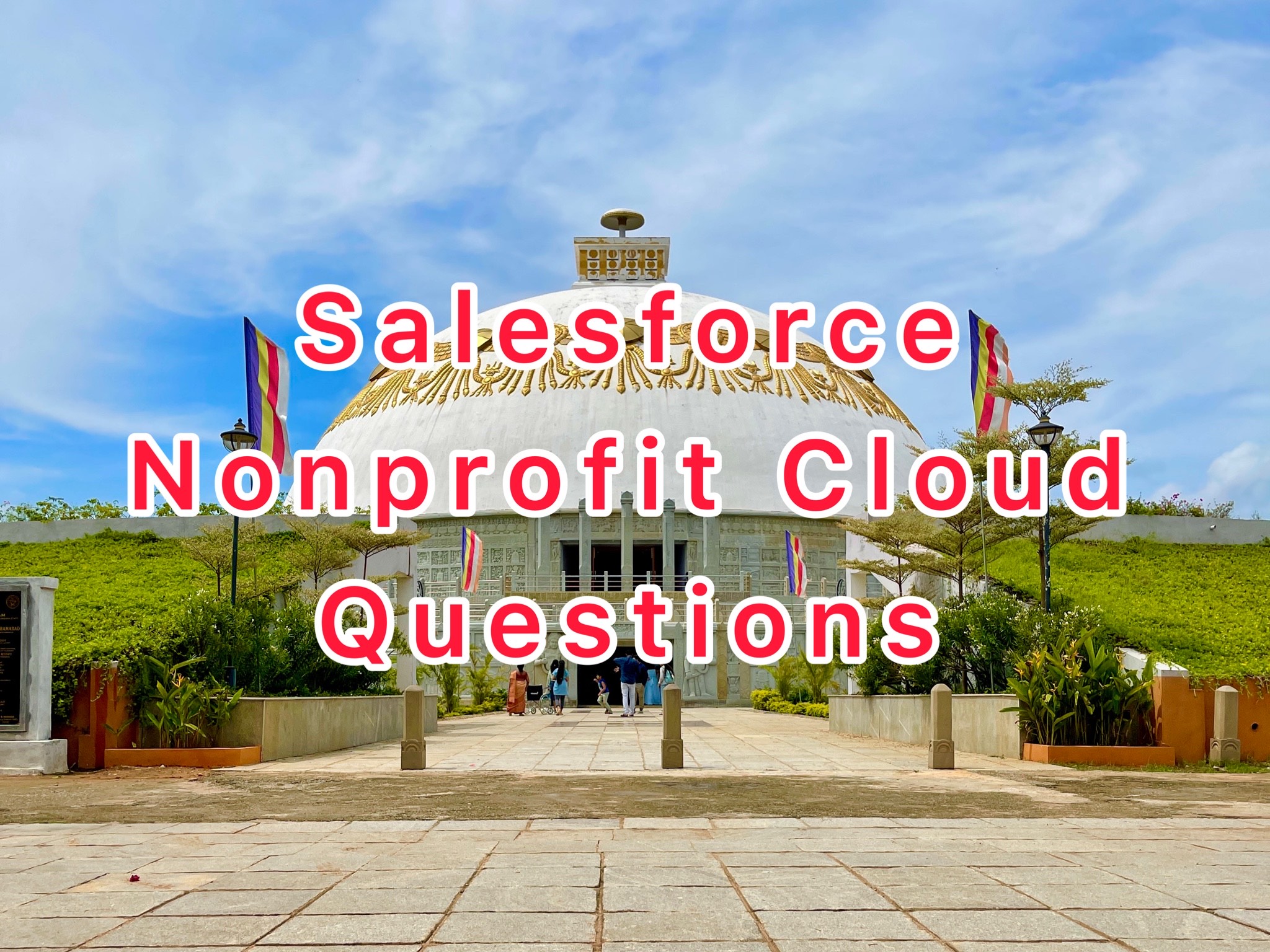Salesforce Reports and Dashboards Interview Questions and Answers.
- Q1. What is a Report?
- Q2. What is a Report Type?
- Q3. What are different Report formats?
- Q4. What is a Report folder?
- Q5. What is a Dashboard?
- Q6. What is a Dashboard folder?
- Q7. Explain some of the key Dashboard Component Types.
- Q8. List some of the key Report Chart Types.
- Q9. List some of the Salesforce Report best practices.
- Q10. List some of the Salesforce Dashboard best practices.
Q1. What is a Report?
A report is a group of data that meets a set of criteria, for example, a group of accounts or opportunities.
Q2. What is a Report Type?
The report type you choose determines which records and fields appear in your report. For example, the Opportunities report type gives you access to Opportunity records and fields like Amount, Stage, and Type. A report type is like a template that makes reporting easier. Report type determines which fields and records are available for use when creating a report. This is based on the relationships between a primary object and its related objects. Reports display only records that meet the criteria defined in the report type. Out of the box, Salesforce provides a set of predefined standard report types.
Q3. What are different Report formats?
Salesforce provides following report formats:
- Tabular(Default) – Similar to a spreadsheet, they consist simply of an ordered set of fields in columns, with each matching record listed in a row
- Summary – Summary reports are similar to tabular reports, but also allow you to group rows of data, view subtotals, and create charts
- Matrix – Matrix reports allow you to group records both by row and by column
- Joined – Joined reports are report blocks that provide different views of your data
Q4. What is a Report folder?
Every report is stored in a folder. Report folders determine how reports are accessed, and who can access them to view, edit, or manage. Folders can be public, hidden, or shared.
Q5. What is a Dashboard?
Dashboards offer a visual display of your data around a common theme. Each dashboard component is based on a single source report. You can use the same or different source reports for the various components in a dashboard.
Q6. What is a Dashboard folder?
Like reports, dashboards are stored in folders. If you have access to a folder, you can view its dashboards. To view the individual dashboard components, you will also need access to the underlying reports.
Q7. Explain some of the key Dashboard Component Types.
Some the of the key Dashboard Component Types are listed below:
Q8. List some of the key Report Chart Types.
Some of the key Report Chart Types are listed below:
| Bar charts | A bar chart shows values as horizontal lengths, so this format can be good for comparing distance or time. Use a bar chart when you have a summary report with a single grouping, or you only want to display one grouping. |
| Column charts | A column chart is very much like a bar chart, but it can be a better format for showing relative counts of things, such as leads or dollars. Use a column chart when you have a summary report with a single grouping, or you only want to display one grouping. |
| Line Charts | Line charts are good for showing changes in the value of an item over a series of points in time, such as week to week or quarter to quarter. Use a line chart when you have one important grouping representing an ordered set of data and one value to show. |
| Pie Charts | Use a pie chart when you have multiple groupings and want to show the proportion of a single value for each grouping against the total. |
| Donut Charts | Use a donut chart when you have multiple groupings and want to show not only the proportion of a single value for each grouping against the total, but also the total amount itself. |
| Funnel Charts | Use a funnel chart when you have multiple groupings in an ordered set and want to show the proportions among them. |
| Scatter Charts | Use scatter charts to show meaningful information using one or two groups of report data plus summaries. |
Q9. List some of the Salesforce Report best practices.
Some of the best practices to improve report performance are:
- Use efficient filters – By limiting the number of records returned, adding a filter can significantly speed up reports.
- Filter with defined date ranges instead of open-ended relative date ranges – If a sluggish report has an open-ended relative date filter, like Close Date LESS THAN Yesterday, replace the relative date with a defined date range to speed up the report.
- Filter with EQUALS instead of CONTAINS
- Filter with NOT EQUAL TO instead of DOES NOT CONTAIN
- Don’t filter by row-level formulas
- Remove unnecessary columns – You can improve report performance by removing default columns from commonly used report types.
- Hide details – You can improve report performance of reports with grouped data by hiding detail rows
- Write efficient formulas
- Add formula fields to report types instead of writing report formulas
- Avoid referencing objects outside a report type in a formula field
- Write row-level formulas sparingly
- Don’t group data by row-level formulas
- Bucket data sparingly – Because buckets evaluate every record returned by reports to see whether they belong in the bucket or out, they can slow down reports. If a report is running slowly, consider redesigning it to use fewer buckets.
- Simplify sharing rules throughout Salesforce – Sharing rules govern access to objects. Reports access objects. Complex sharing rules can therefore slow down reports as each sharing rule has to be evaluated each time the report gets data from an object.
Q10. List some of the Salesforce Dashboard best practices.
Some of the best practices to improve dashboard performance are:
- Use efficient source reports – When you refresh a dashboard, all the source reports run. If source reports take a long time to run, then dashboards based on them take a long time to refresh.
- Create source reports that run fast – The best way to speed up a slow dashboard is to speed up its source reports. The faster source reports run, the faster the dashboard refreshes!
- Base your dashboard on as few source reports as possible – Ideally, base your dashboard on a single source report.
- Refresh dashboards sparingly – Refreshing a dashboard enqueues several processes that Salesforce runs resulting in up-to-date data. Each source report runs, filters are applied, charts are drawn, and so forth. Salesforce limits the number of times each user can refresh a dashboard to one time per minute.
- Remove unnecessary dashboard components – Dashboards with fewer components tend to run faster than dashboards with lots
- Combine multiple components into one – Sometimes you can show the data in two or more components in only one. Merging multiple components into one means fewer source reports run, which means the dashboard refreshes more quickly.
- Split a dashboard in two – If you have a dashboard with many components that takes a long time to refresh, consider splitting the dashboard in two.
This article will be updated soon, please come back for more Salesforce Reports and Dashboards Interview Questions and Answers!
Additional Resources
Recommended Articles











